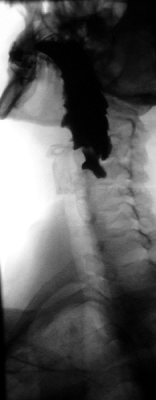Workbook
Start-up writing task (Go to this page)
In both classical and quantum physics we find descriptions of light. Investigating and describing the nature of light was important for the development of quantum physics.
Writing task 1
What do you think light is? Describe it as well as you can. Use three to four sentences.
Simulate photoelectric effect (Go to this page)
You are now going to work with a simulation of the photoelectric effect. You will get questions and problems to respond to along the way.
Open the simulation (opens in a new tab)
Start by choosing zinc (Zn) as the cathode material.
Note that you can vary the intensity (I) and wavelength (λ) of the incoming light and the voltage (U) of the battery. You can also read the current (Ianode) that flows in the circuit.
Writing task 2A
Set the intensity to 5 W/m2, and set the voltage to 0 V.
Start the simulation.
- What happens when you change the wavelength of the incoming light?
- Write down the relation between the wavelength and the energy of a photon.
- What must the wavelength be in order for electrons to be emitted from zinc?
- What must the energy (Ephoton) of the photons be?
- Check that the energy reading, Ephoton, agrees with what you can calculate from the relation in point 2.
- The largest light frequency that can get electrons emitted is called the threshold frequency. Determine the threshold frequency.
Writing task 2B
Set the voltage to 0 V and the wavelength to 250 nm.
- What happens to the current, Ianode, when you change the intensity of the incoming light?
- Keep the voltage at 0 V, but set the wavelength to 400 nm. What happens to the current when you now change the intensity of the incoming light?
Writing task 2C
Explain why the intensity of the light makes a difference for certain wavelengths, but not for others.
Writing task 2D
Set the wavelength to 270 nm and the intensity to 10 W/m2.
- What happens when you change the voltage?
- Notice that for a certain voltage, the electrons just barely reach the anode. We call this the stopping voltage or stopping potential. What is the stopping voltage?
Writing task 2E
Set the intensity to 10 W/m2 and the voltage to 0 V.
1. Use the simulation and make a table (for instance in Excel). The table should contain wavelength, frequency og kinetic energy as shown below.
Fill in your own table with increasing wavelengths.
| Wavelength, λ (nm) | 150 | ... | ... | ... |
| Frequency, f (1015Hz) | 2,0 | ... | ... | ... |
| Kinetic energy (10-19J) | 6,30 | ... | ... | ... |
2. Make a graph of kinetic energy as a function of frequency.
Einstein’s equation for photoelectric effect may be written like this:
Ek = hf - W
Here Ek Ek is kinetic energy and W is the work function. The work function is the minimum amount of energy required for an electron to be emitted from the cathode material, in this case zinc. In the simulation you can see that the work function for zinc is 6,94∙10-19 J.
3. Make a point in your graph that marks the work function.
4. Use your graph to find a value for the Planck constant.
5. Use your graph to find the threshold frequency (see also exercise 2A, point 6
Writing task: Photons (Go to this page)
Writing task 3
Write down some sentences about light where you use the photon model. Include these concepts: Energy, momentum, photoelectric effect, Compton scattering, annihilation, pair production.
Start-up writing task (Go to this page)
You have probably had an X-ray image taken maybe at the dentists or in order to examine a broken arm?
Writing task 4
What do you know about X-rays?
Challenge (Go to this page)
 Person swallowing barium porridge. On this picture, colours are inverted so that soft tissue (with low electron density) appears light, whereas substances with high electron density give dark colours. Photo: Bernd Brägelmann
Person swallowing barium porridge. On this picture, colours are inverted so that soft tissue (with low electron density) appears light, whereas substances with high electron density give dark colours. Photo: Bernd BrägelmannDiscuss with a fellow student and write down short answers to the questions below.
Remember that elements with many electrons absorb X-rays most efficiently.
You may have use for the periodic table.
Writing task 5
A person about to get an X-ray taken of the stomach and intestines eats barium porridge before the examination. Can you imagine why?
Writing task 6
In an X-ray image, the photoelectric effect in bones and tissue gives good contrast, whereas Compton scattering gives a poorer contrast. Why is this?
Dr. Quantum and the double slit experiment (Go to this page)
Writing task 7
Fill in your observations from the film “Dr. Quantum and the double slit experiment” in the table below. Dr. Quantum controls variables by doing his experiment in different ways. He sends marbles, water waves and electrons through either a single or a double slit. In each case, make a note in the table whether or not you observe an interference pattern.
| Through a single slit | Through a double slit | ||
| Classical / macroscopic | Marbles | ||
| Water waves | |||
| Quantum physical / microscopic | Electrons (many at a time) | ||
| Electrons (one at a time) | ### | ||
| Electrons (one at a time, with an observer) | ### | ||
Write about particles as waves (Go to this page)
Give written answers to the questions from the discussion.
Writing task 8
In the film “Particles as waves”, Susanne talks about particles having wave nature. What is meant by that?
Writing task 9
What does Heisenberg’s uncertainty principle say, and what does it mean for how much we can know about nature?
Writing task 10
The wave nature of particles represents a break with classical physics. In what ways?
Talk and write about quantum physics and philosophy (Go to this page)
 Photo: colourbox.no
Photo: colourbox.noDiscussion
Discuss with another student: What do you think about Schrödingers cat? Is the cat both dead and alive before we open the box?
Writing task 11
What do you think about Schrödingers cat? Write down some thoughts.

 Vennligst vent...
Vennligst vent...